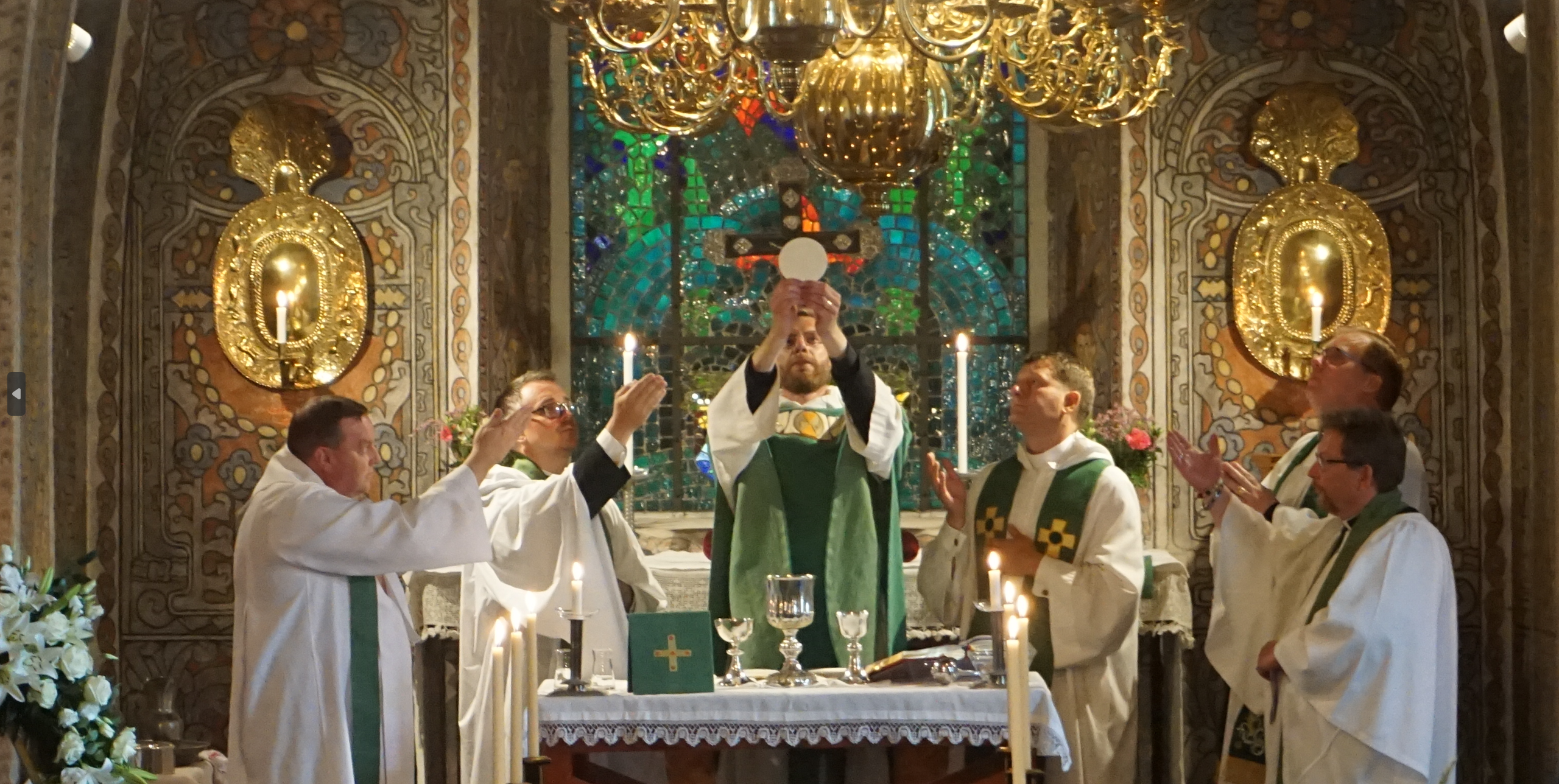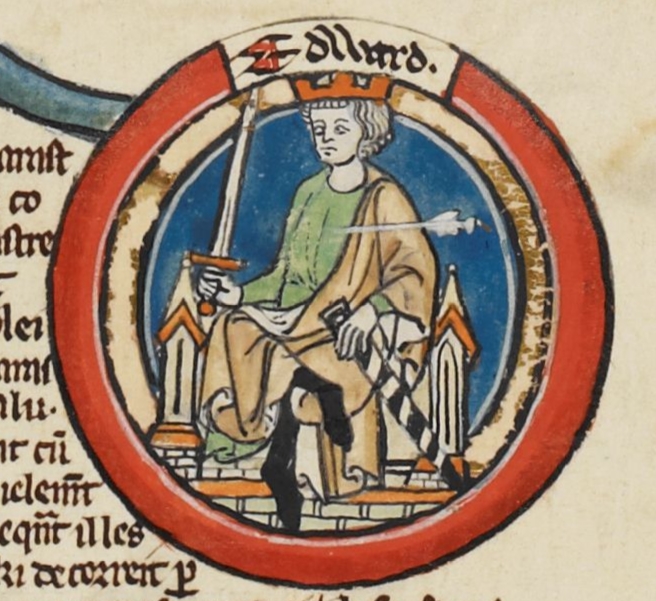|
Purchart I
Purchart I (born c. 920/930; died 9 August 975) was the abbot of the Benedictine abbey of Saint Gall from 958 until 971. Life Purchart came from the family of the Udalrichings ( Udalrichinger). His father was probably count Ulrich V; his mother was named Wendelgard. He was probably born between 920 and 930. He came into the Abbey of Saint Gall at a young age as an oblate and was made deacon under Craloh. His first documented mention is dated at 959/60. His predecessor Ekkehart I, whom Craloh had selected to be his successor, but an injury following a riding accident prevented him from holding office. Ekkehart I thus selected Purchart to be successor and he subsequently became abbot. However, due to also being injured in a riding accident, he could not attend to all of his duties. He received the confirmation of immunity and all other rights and possessions from Pope John XIII in 967. Works Purchart was very popular with the monks due to his benevolence. However, economy and ... [...More Info...] [...Related Items...] OR: [Wikipedia] [Google] [Baidu] |
Abbey Of Saint Gall
The Abbey of Saint Gall () is a dissolved abbey (747–1805) in a Catholic religious complex in the city of St. Gallen in Switzerland. The Carolingian-era monastery existed from 719, founded by Saint Othmar on the spot where Saint Gall had erected his hermitage. It became an independent principality between 9th and 13th centuries, and was for many centuries one of the chief Benedictine abbeys in Europe. The library of the Abbey is one of the oldest monastic libraries in the world. The city of St. Gallen originated as an adjoining settlement of the abbey. The abbey was secularized around 1800, and in 1848 its former church became St. Gallen Cathedral, the seat of the Diocese of Saint Gallen. Since 1983 the abbey precinct has been a UNESCO World Heritage Site. History Foundation Around 612 Gallus, according to tradition an Irish monk and disciple and companion of Saint Columbanus, established a hermitage on the site that would become the monastery. He lived in his cell ... [...More Info...] [...Related Items...] OR: [Wikipedia] [Google] [Baidu] |
Oblation
An oblation is a solemn offering, sacrifice or presentation to God, to the Church for use in God's service, or to the faithful, such as giving alms to the poor. The word comes from the Late Latin ''oblatio'' (from ''offerre'', ''oblatum'' 'to offer'), 'an instance of offering' and by extension 'the thing offered'. Bible use The Latin Vulgate, and following this many English versions such as the KJV, 1611, uses the word to stand for the meal offering under the Law of Moses. Ecclesiastical use It is thus applied to certain parts of the Eucharistic service in Christian liturgies. The rites of Roman Catholicism, Eastern Orthodoxy, Lutheranism, and Anglicanism employ an oblation: gifts of bread and wine are offered to God. Liturgically speaking, there are two oblations: the lesser oblation, sometimes known as the offertory, in which the bread and wine, as yet unconsecrated, are presented and offered to God, and the greater oblation, the oblation proper, in which the Body and B ... [...More Info...] [...Related Items...] OR: [Wikipedia] [Google] [Baidu] |
Ekkehard I
Ekkehard I (; died 14 January 973), called ''Major'' or ''Senex'' (the Elder), was a monk of the Abbey of Saint Gall. He was of noble birth, of the Jonschwyl family in Toggenburg, and was educated in the monastery of St. Gall. After joining the Benedictine Order, he was appointed director of the inner school there. Later, under Abbot Kralo, who trusted him implicitly, he was elected dean of the monastery and, for a time, directed all the affairs of the abbey. Ekkehard made a pilgrimage to Rome, where he stayed for some time under Pope John XII, who presented him with various relics of St. John the Baptist. After Kralo's death Ekkehard refused the abbatial succession, because of lameness resulting from a fractured leg. However, he directed the choice of Burkard, son of Count Ulrich of Buchhorn, who governed St. Gall with the advice and co-operation of Ekkehard. The latter erected a hospice in front of the monastery for the sick and strangers, and was in many other ways a model of ... [...More Info...] [...Related Items...] OR: [Wikipedia] [Google] [Baidu] |
Pope John XIII
Pope John XIII (; ca. 930 – 6 September 972) was the bishop of Rome and ruler of the Papal States from 1 October 965 to his death. His pontificate was caught up in the continuing conflict between the Holy Roman emperor, Otto I, and the Roman nobility. After long and arduous negotiations, he succeeded in arranging a Byzantine marriage for Otto II, in an effort to legitimize the Ottonian claim to imperial dignity. He also established church hierarchy in Poland and Bohemia. Family and early career Born in Rome, John was the son of another John, who was a bishop. It has been conjectured that his father was the Roman noble John Crescentius, a member of the Crescentii family who had married into the family of Count Theophylact I of Tusculum. If so, his father had previously been a duke, and possibly even appointed consul, prior to his ordination as bishop.Mann, p. 286 Consequently, John was probably the brother of Crescentius the Elder (the '' patricius romanorum''), as well as S ... [...More Info...] [...Related Items...] OR: [Wikipedia] [Google] [Baidu] |
Recluse
A recluse is a person who lives in voluntary seclusion and solitude. The word is from the Latin , which means 'to open' or 'disclose'. Examples of recluses are Symeon of Trier, who lived within the great Roman gate Porta Nigra with permission from the Archbishop of Trier, or Theophan the Recluse, a 19th-century Orthodox Christian monk who was later venerated as a saint. Many celebrated figures of human history have spent significant portions of their lives as recluses. In the Russian Orthodox and Catholic Church tradition, a Poustinik is a temporary hermit who has been called to pray and fast alone in a cabin for at least 24 hours. In ancient Chinese culture, scholars are encouraged to be a public servant in a scrupulous and well-run government but expected to go into reclusion as a ''yinshi'' (隐士, 'gentleman-in-hiding') when the government is rife with corruption.''Analects'' 8:13 《論語 · 泰伯》:天下有道則見,無道則隱。Show you talents hrough p ... [...More Info...] [...Related Items...] OR: [Wikipedia] [Google] [Baidu] |
Conrad Of Constance
Conrad of Constance (; ; 900 – 26 November 975) was a German bishop and saint. Life Conrad was a member of the powerful Welf family, son of Count Heinrich of Altdorf. After an education at the cathedral school in Constance, he became provost of Constance Cathedral and in 934 was made Bishop of Constance. It is counted as one of his achievements that he avoided becoming enmeshed in the politics of the day and reserved his energies for his episcopal duties. He was nevertheless close to Emperor Otto I, whom he accompanied to Italy in 962. Conrad made three pilgrimages to Jerusalem as well as a number to Rome. He founded a number of churches on the episcopal estates and the hospital at Kreuzlingen, named after a portion of the True Cross which Conrad brought back from Jerusalem and presented to it. Veneration His remembrance as a role model for courage was entirely due to the efforts of Bishop Ulrich I of Dillingen, Bishop of Constance (1111–1127). The ''Vita'' of Conrad was ... [...More Info...] [...Related Items...] OR: [Wikipedia] [Google] [Baidu] |
10th-century Births
1 (one, unit, unity) is a number, numeral, and glyph. It is the first and smallest positive integer of the infinite sequence of natural numbers. This fundamental property has led to its unique uses in other fields, ranging from science to sports, where it commonly denotes the first, leading, or top thing in a group. 1 is the unit of counting or measurement, a determiner for singular nouns, and a gender-neutral pronoun. Historically, the representation of 1 evolved from ancient Sumerian and Babylonian symbols to the modern Arabic numeral. In mathematics, 1 is the multiplicative identity, meaning that any number multiplied by 1 equals the same number. 1 is by convention not considered a prime number. In digital technology, 1 represents the "on" state in binary code, the foundation of computing. Philosophically, 1 symbolizes the ultimate reality or source of existence in various traditions. In mathematics The number 1 is the first natural number after 0. Each natural numbe ... [...More Info...] [...Related Items...] OR: [Wikipedia] [Google] [Baidu] |
975 Deaths
Year 975 ( CMLXXV) was a common year starting on Friday of the Julian calendar. Events By place Byzantine Empire * Arab–Byzantine War: Emperor John I raids Mesopotamia and invades Syria, using the Byzantine base at Antioch to press southwards to Tripoli. He conquers the cities of Baalbek, Damascus, Sidon, Tiberias and Caesarea, but fails to take Jerusalem. Europe * October 15 – Oberto I (Obizzo), an Italian count palatine, dies. The Marca Obertenga (Eastern Liguria) is divided among the Obertenghi family. * Emperor Otto II (the Red) leads a punitive expedition against Boleslaus II, duke of Bohemia (approximate date). England * July 8 – King Edgar I (the Peaceful) dies at Winchester after a 16-year reign. He is succeeded by his 12-year-old son Edward II (the Martyr) as ruler of England. Africa * December 21 – Caliph Al-Mu'izz dies in Egypt after a 22-year reign in which he has extended his realm from Sicily to the Atlantic. He is succee ... [...More Info...] [...Related Items...] OR: [Wikipedia] [Google] [Baidu] |
Year Of Birth Uncertain
A year is a unit of time based on how long it takes the Earth to orbit the Sun. In scientific use, the tropical year (approximately 365 solar days, 5 hours, 48 minutes, 45 seconds) and the sidereal year (about 20 minutes longer) are more exact. The modern calendar year, as reckoned according to the Gregorian calendar, approximates the tropical year by using a system of leap years. The term 'year' is also used to indicate other periods of roughly similar duration, such as the lunar year (a roughly 354-day cycle of twelve of the Moon's phasessee lunar calendar), as well as periods loosely associated with the calendar or astronomical year, such as the seasonal year, the fiscal year, the academic year, etc. Due to the Earth's axial tilt, the course of a year sees the passing of the seasons, marked by changes in weather, the hours of daylight, and, consequently, vegetation and soil fertility. In temperate and subpolar regions around the planet, four seasons are g ... [...More Info...] [...Related Items...] OR: [Wikipedia] [Google] [Baidu] |
Abbots Of Saint Gall
Abbot is an ecclesiastical title given to the head of an independent monastery for men in various Western Christian traditions. The name is derived from ''abba'', the Aramaic form of the Hebrew ''ab'', and means "father". The female equivalent is abbess. Origins The title had its origin in the monasteries of Egypt and Syria, spread through the eastern Mediterranean, and soon became accepted generally in all languages as the designation of the head of a monastery. The word is derived from the Aramaic ' meaning "father" or ', meaning "my father" (it still has this meaning in contemporary Arabic: أب, Hebrew: אבא and Aramaic: ܐܒܐ) In the Septuagint, it was written as "abbas". At first it was employed as a respectful title for any monk, but it was soon restricted by canon law to certain priestly superiors. At times it was applied to various priests, e.g. at the court of the Frankish monarchy the ' ("of the palace"') and ' ("of the camp") were chaplains to the Merovingian a ... [...More Info...] [...Related Items...] OR: [Wikipedia] [Google] [Baidu] |





